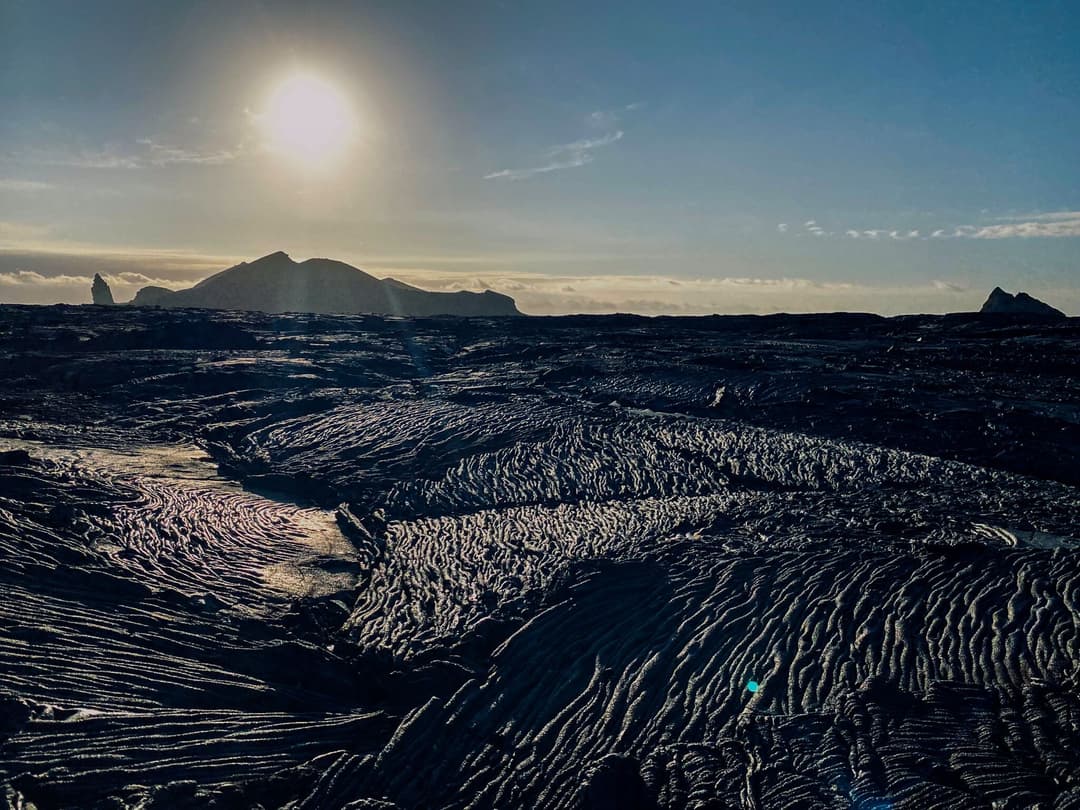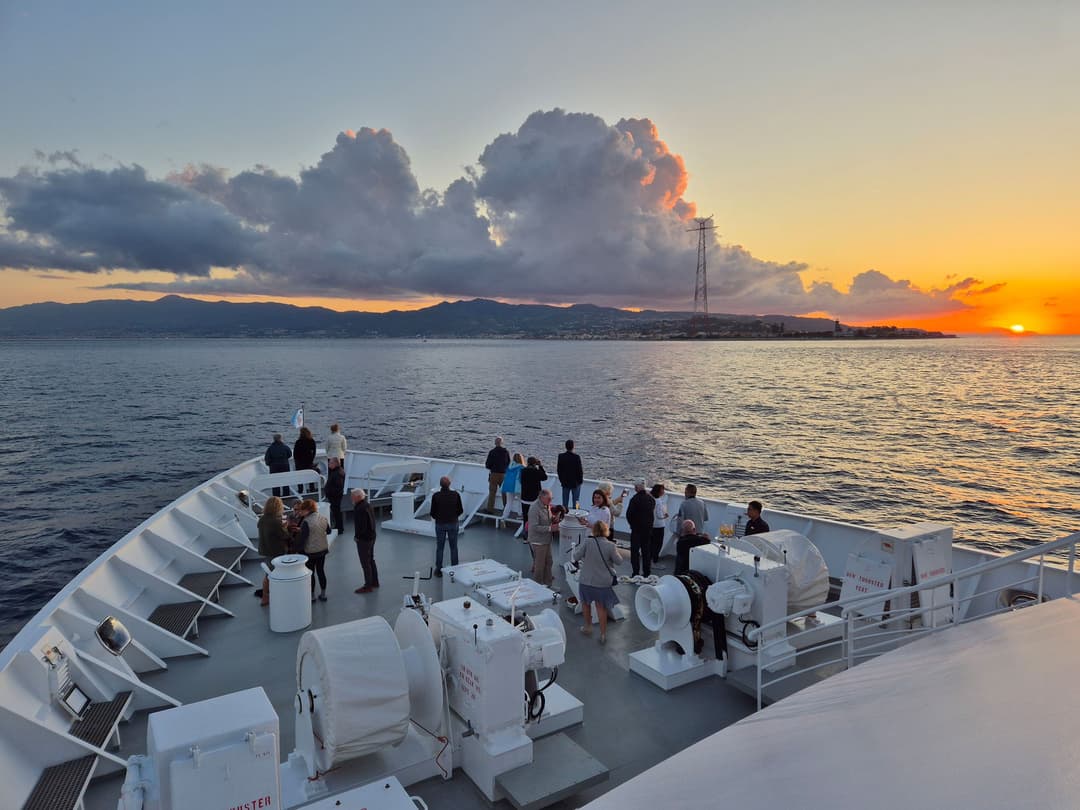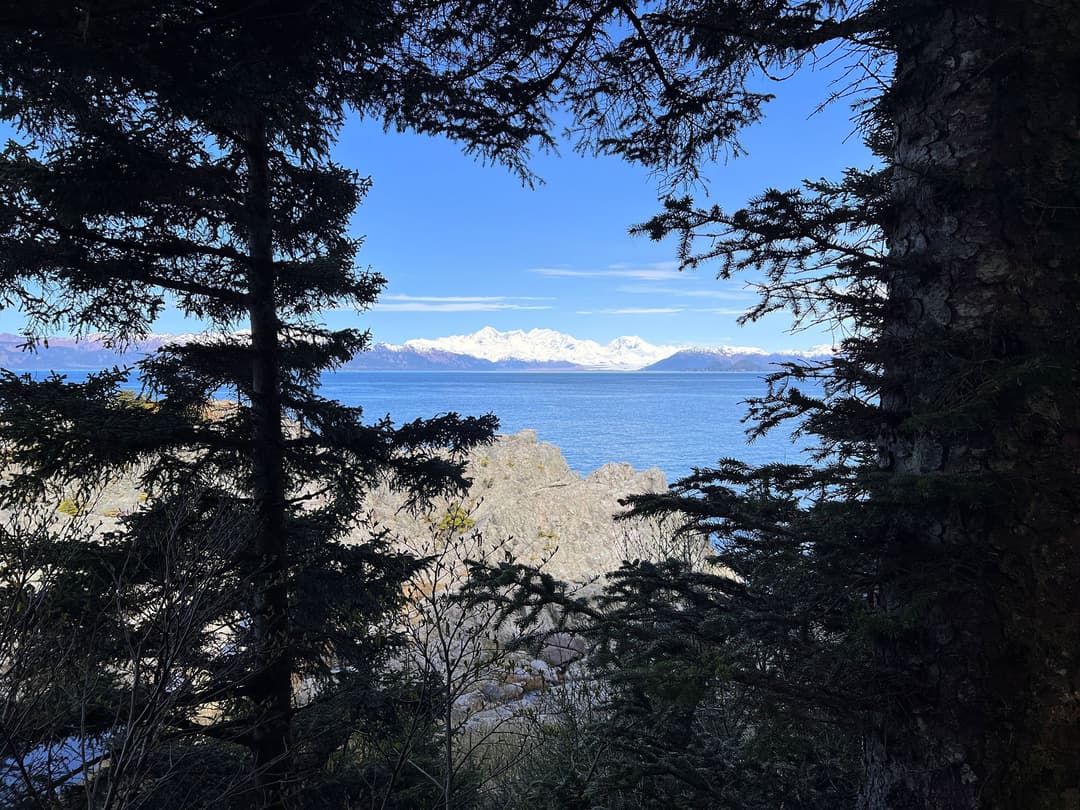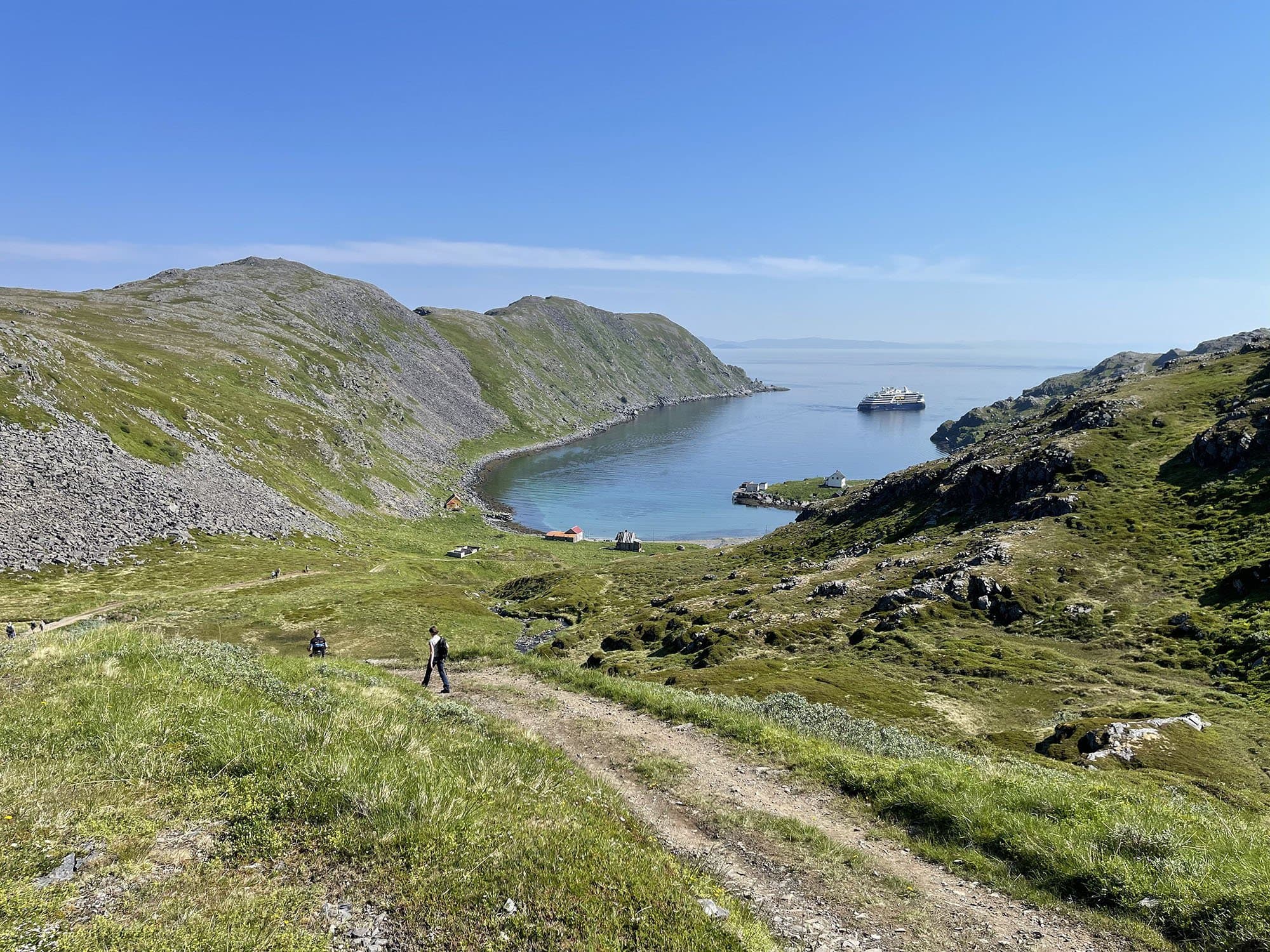
Last week in Lake Eva, Alaska, Naturalist/Certified Photo Instructor Eric Guth spent an afternoon experimenting with shooting plants under ultraviolet light to mimic what the plants might look like to pollinating insects. In his words: “We all have our perceptions of the world, so sometimes it’s fun to think outside the bounds of what we see and know and try to imagine the world as others might perceive it, whether that someone be vertebrate or invertebrate. Human or otherwise.”
Many of this week's photos from the field experiment with seeing the landscape and wildlife in new ways, from a polar bear mid-meal in Svalbard as seen through an iphone and telescope, to the bow of National Geographic Venture reflected in still Alaskan water, to a Galápagos flamingo in a brackish lagoon framed by local vegetation.
For more dispatches from the field, check out our Daily Expedition Reports.
Have you recently traveled aboard one of our ships? Send us your favorite photo! We'd love to feature your favorite memory of your expedition.
Pavlof Harbor, Alaska
Wild Alaska Escape: Sitka to Juneau, June 24, 2022
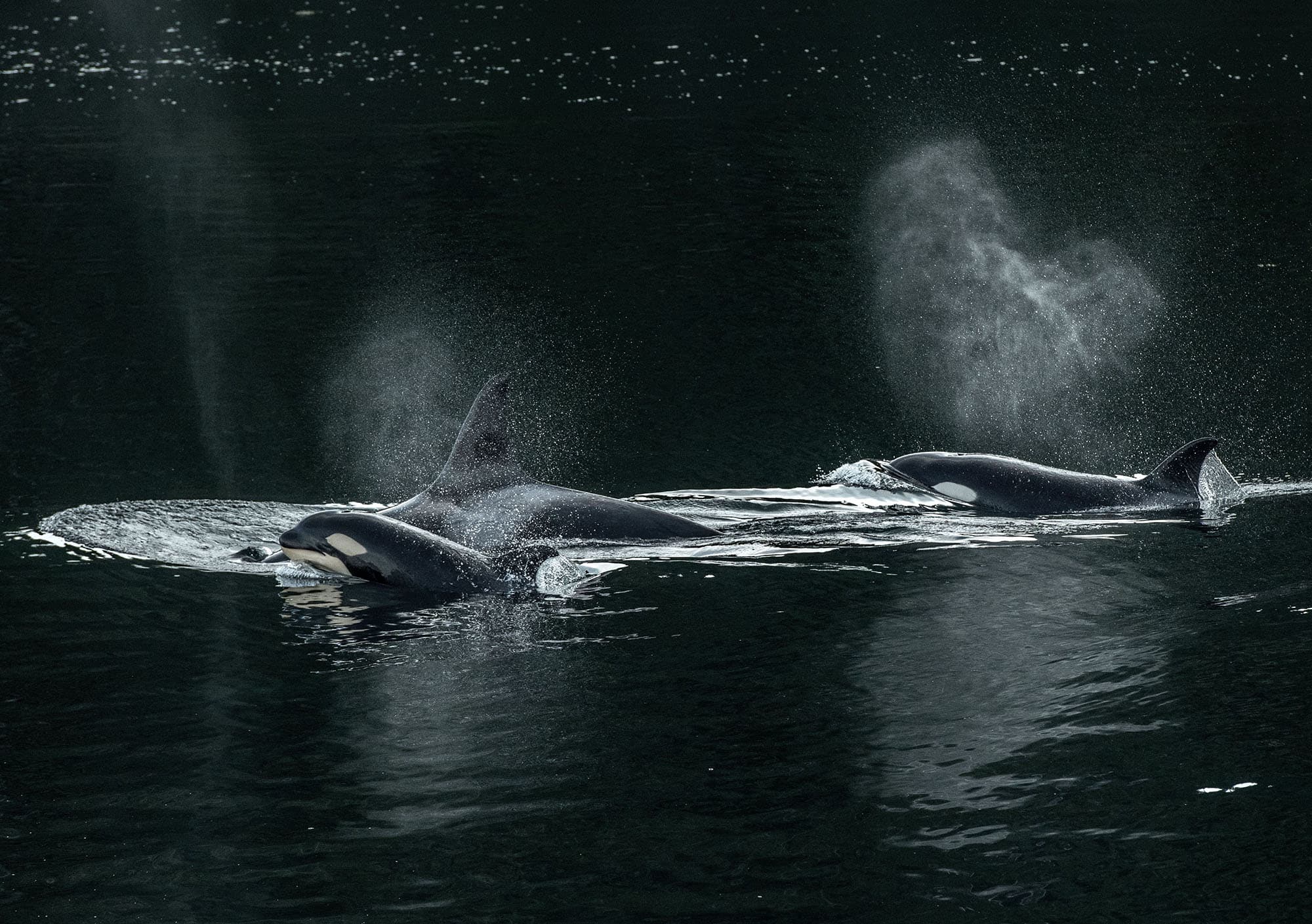
As the afternoon passed to early evening, we gathered in the lounge for cocktails and hors d’oeuvres. Our staff began our first recap, a Lindblad tradition each evening during cocktail hour. As the first staff member began her talk, we saw the expedition leader step to the phone behind the bar. Moments later, the announcement was made, “Killer whales off the bow!” The entire lounge emptied as everyone made their way outside for a rare sighting of killer whales. —Sharon Grainger, Naturalist/Certified Photo Instructor
Lake Eva, Alaska
Exploring Alaska'sCoastal Wilderness, June 26, 2022
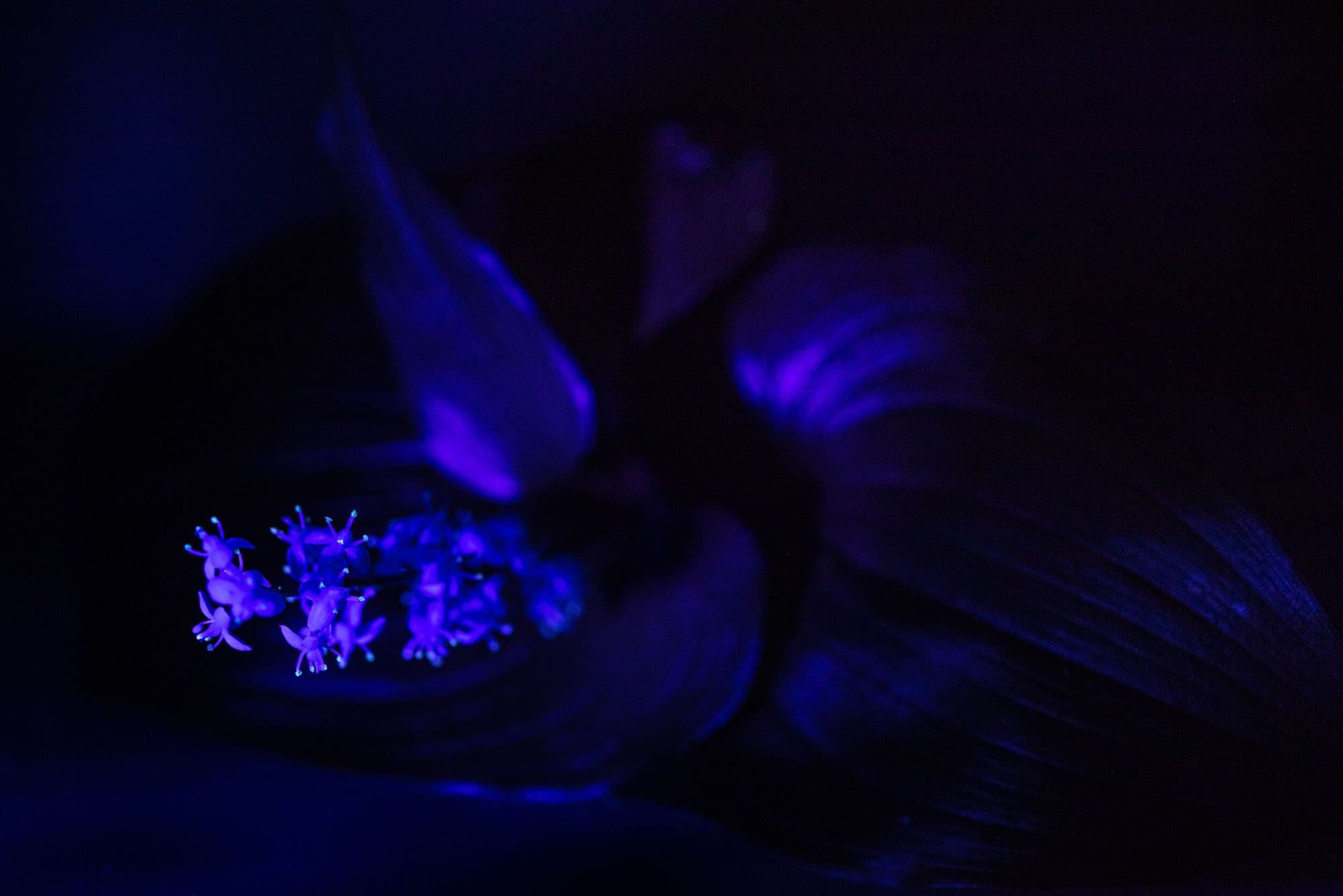
The pollen-laden anthers of this false lily of the valley fluoresce under ultraviolet light. In an attempt to see the world as a fly, bee, bird, or other pollinator would, we took to the forest with a UV (aka: black) light today. The included photos are the result of a studio shoot to better reveal which of these flowers fluoresced when subjected to the glow of a UV light, simulating how a pollinator may see the flowers. Fluorescence happens when a fraction of the light illuminating an object is absorbed and then re-emitted as a different color.
We all have our perceptions of the world, so sometimes it’s fun to think outside the bounds of what we see and know and try to imagine the world as others might perceive it, whether that someone be vertebrate or invertebrate. Human or otherwise. —Eric Guth, Naturalist/Certified Photo Instructor
Santa Cruz Island, Galápagos
Galápagos AboardNational Geographic Endeavour II, June 28, 2022
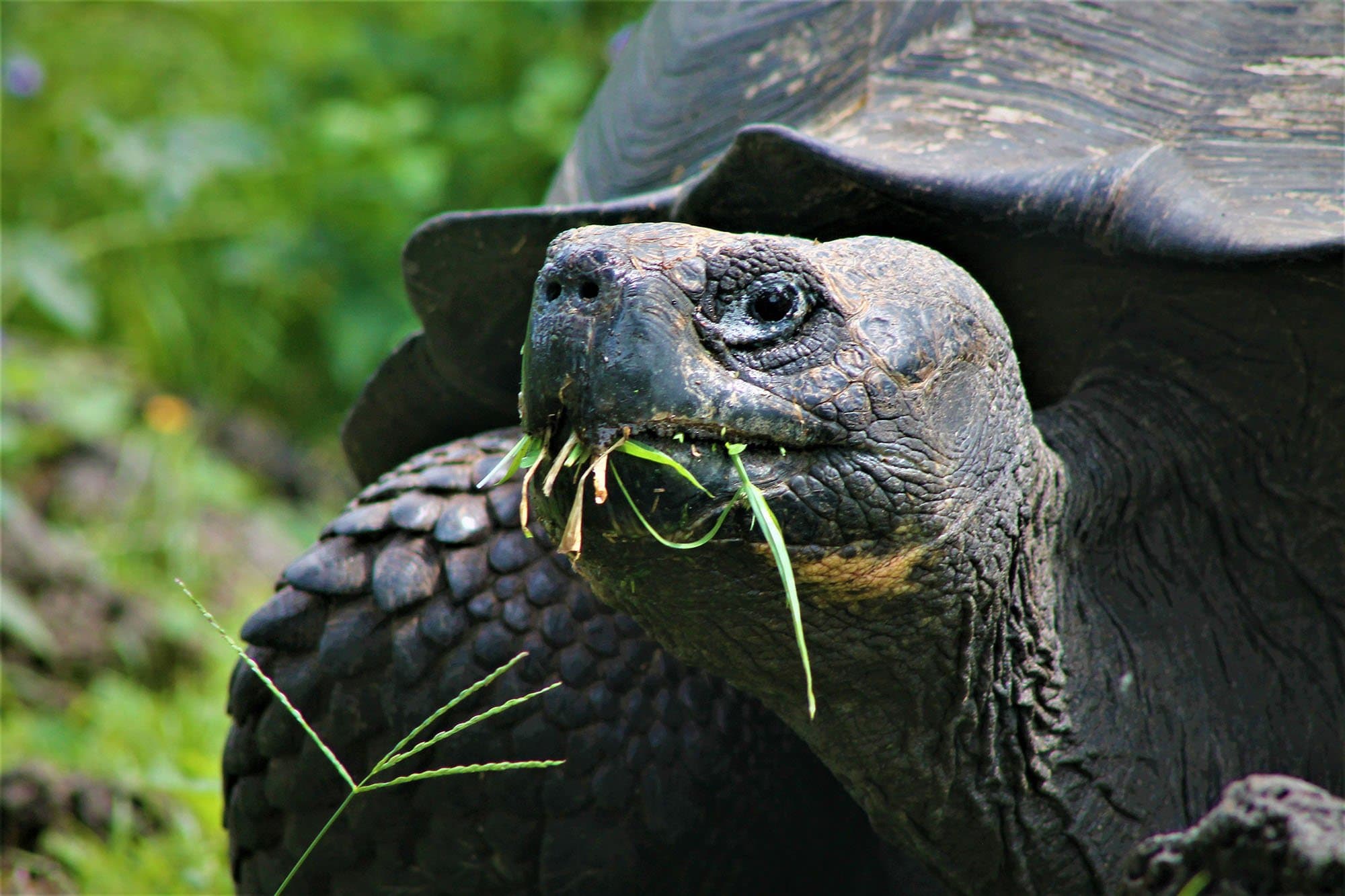
Santa Cruz giant tortoise resting in a freshwater pond. —Omar Adrian, Naturalist
Santa Cruz Island, Galápagos
Galápagos AboardNational Geographic Endeavour II, June 29, 2022
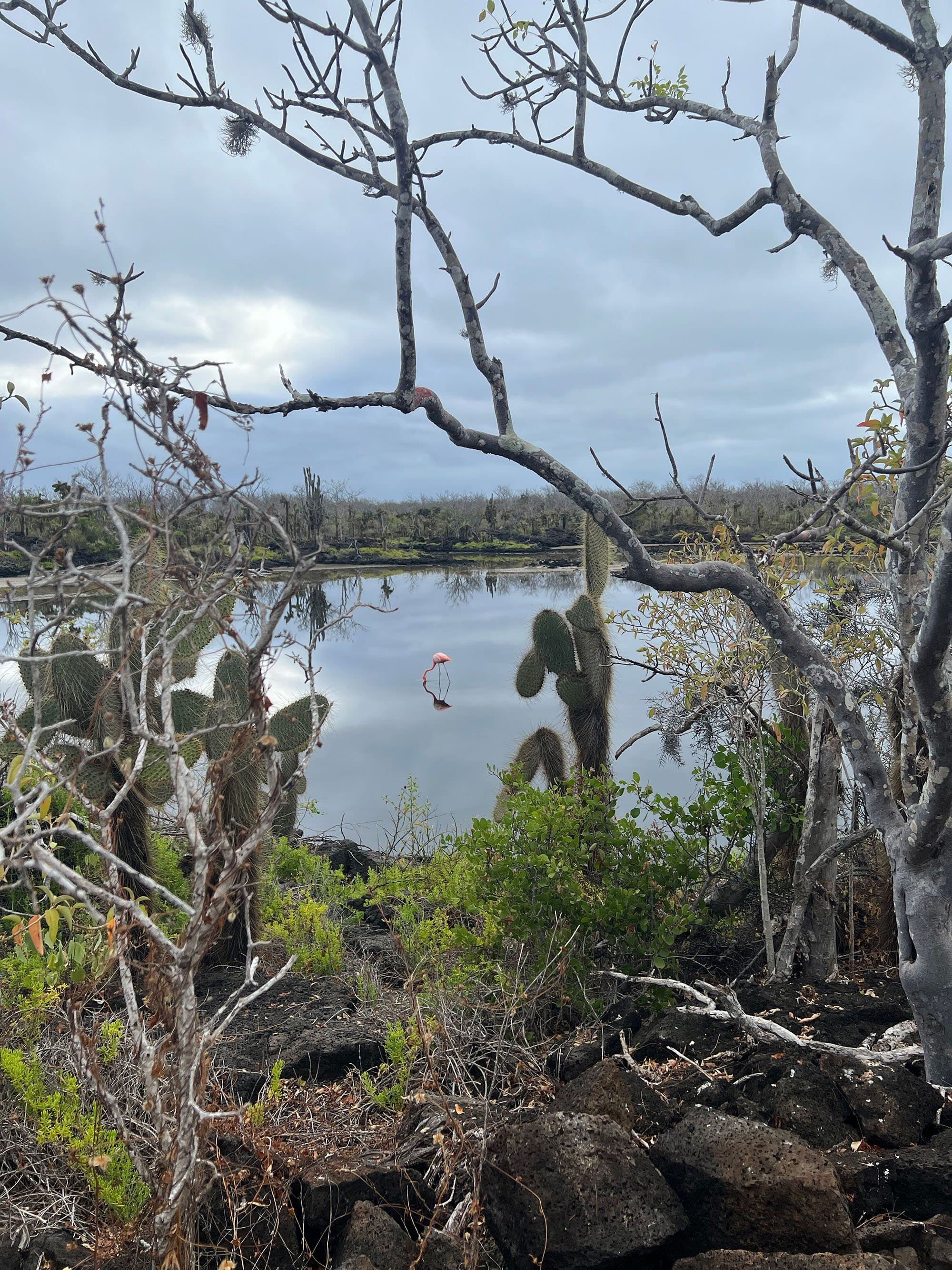
A flamingo feeds in a brackish lagoon at Cerro Dragon. Flamingos feed primarily on small crustaceans, but they also eat a variety of algae species as well. They have a filter system in their beaks that allows them to siphon out their desired prey species. —Cristian Villarroel, Naturalist
Sørøya, Norway
Norwegian Discovery:Svalbard and theNorthern Fjords, June 29, 2022
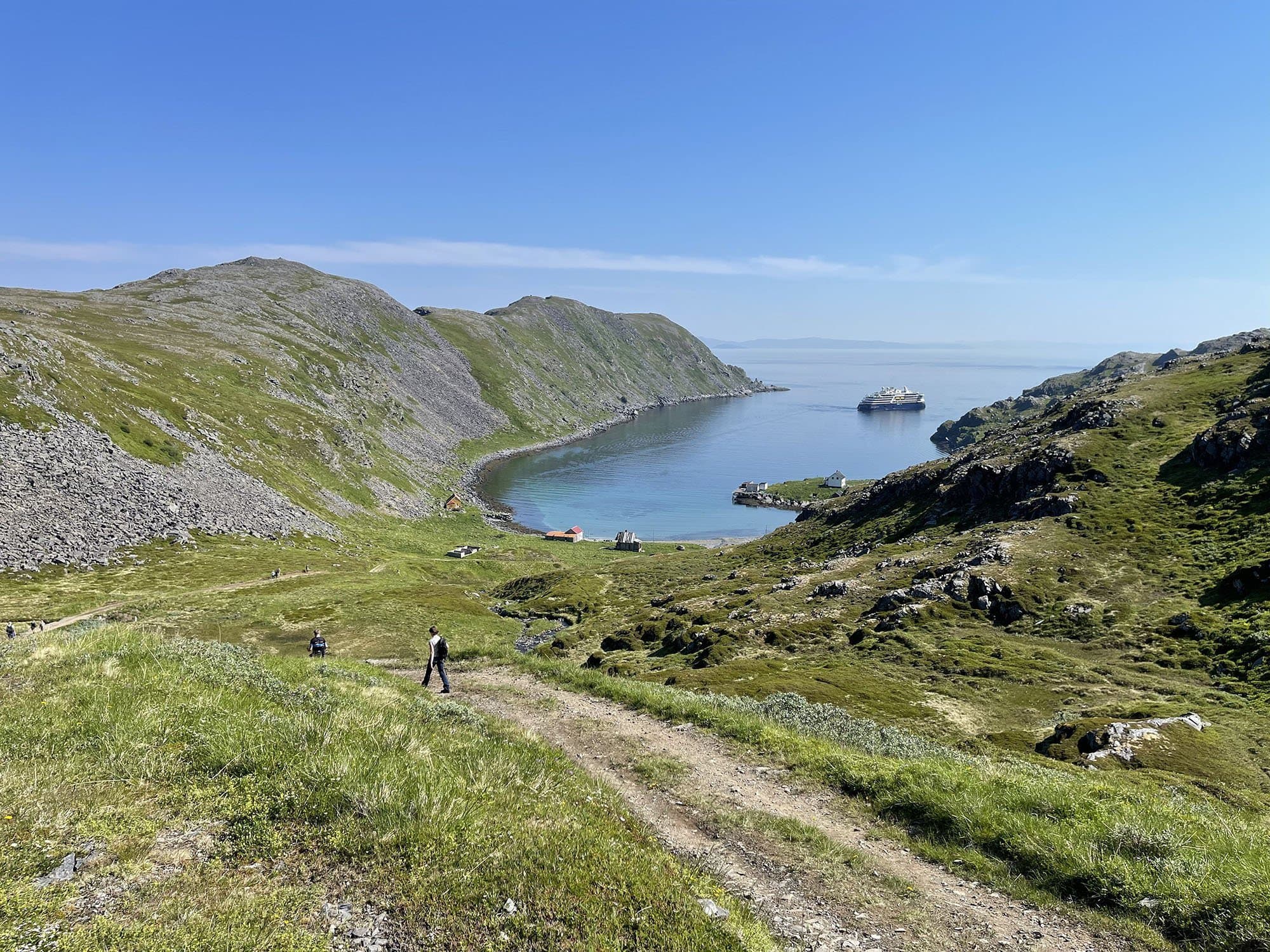
We made our morning landing in beautiful Mefjord to allow walking groups to disembark and go ashore. Zodiac cruisers explored the coastline and searched for eagles, seabirds, and coastal rock formations.
The walkers toiled up a steep slope along a rough farm track on this rocky and mountainous island. They were then able to enjoy the expansive, lush tundra landscape with tiny pools and even patches of low birch and willow “forest” here and there in sheltered ground. —Mark Brazil, Naturalist
South Plaza Island, Galápagos
Wild Galápagos Escape, June 30, 2022
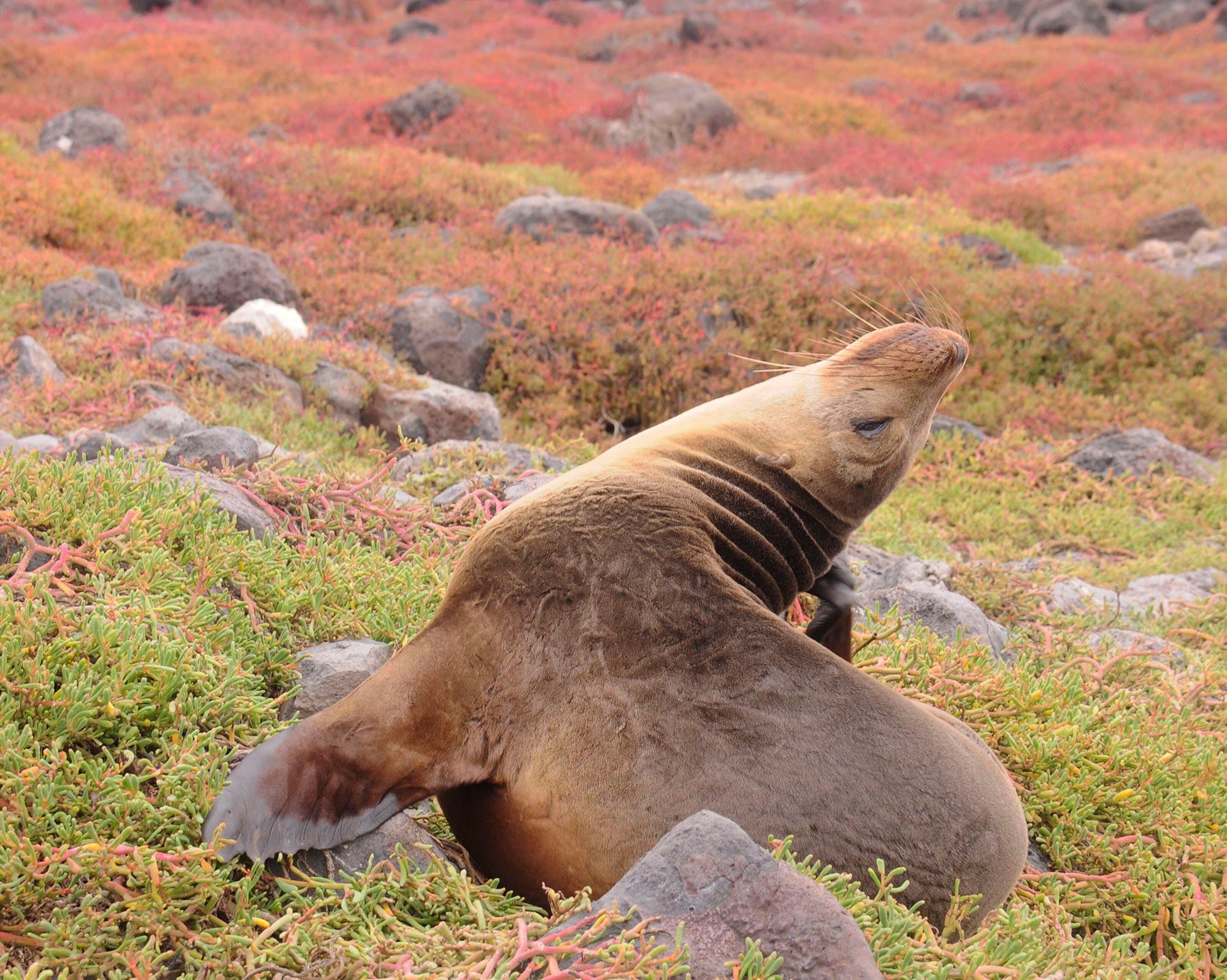
We have a big colony of Galápagos sea lions on South Plaza Island, and they are everywhere. The young Galápagos sea lions love to rest on top of red succulents, which serve as a good mattress. What a life! —Vanessa Gallo, Naturalist
Lerwick, Shetlands
Ancient Isles:England, Ireland,and Scotland, June 30, 2022
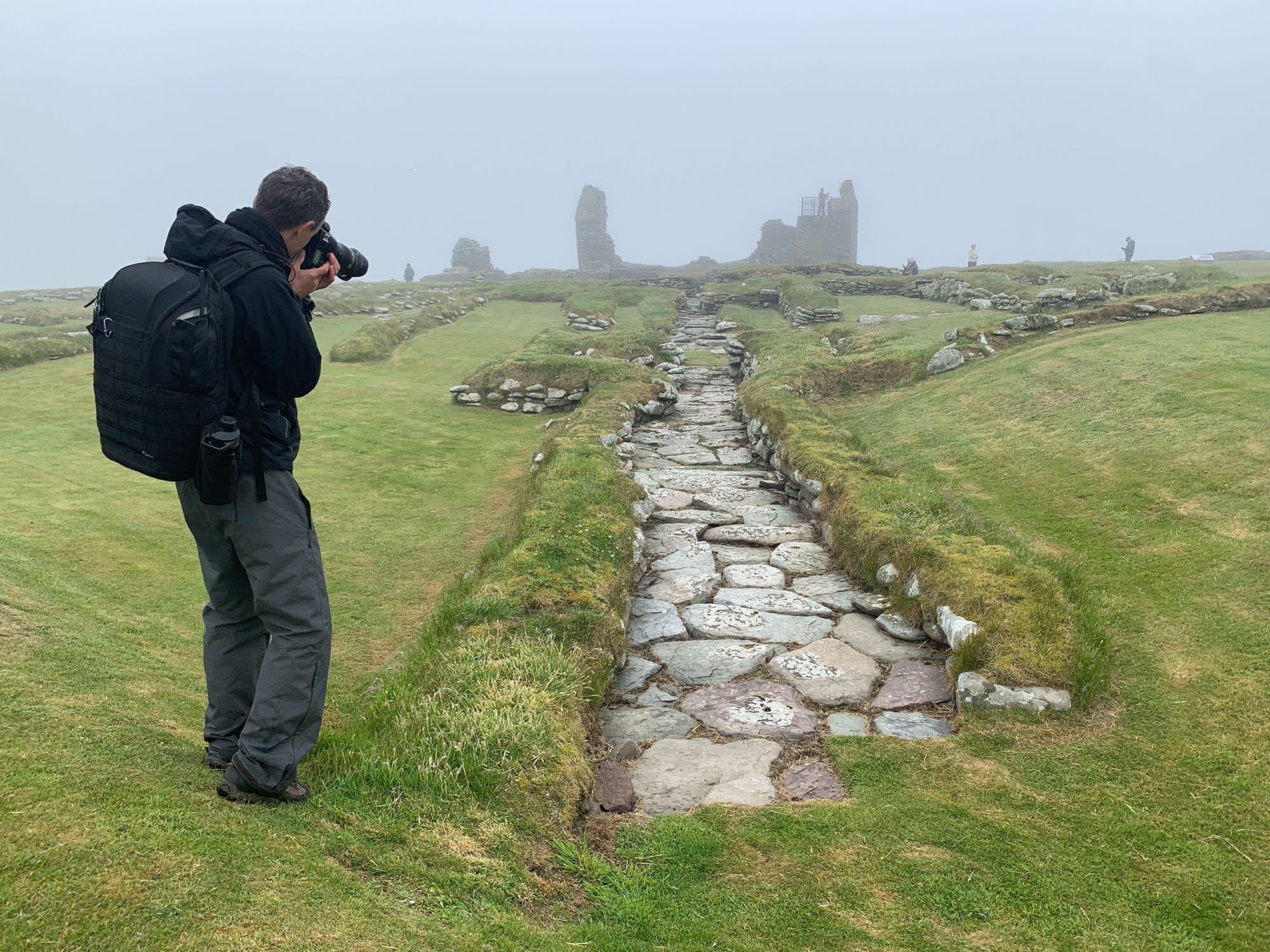
National Geographer Jeff Mauritzen making good use of those leading lines in the unearthed stones of Jarlshof prehistoric and Norse settlement. Set right on the edge of the coast with the fog closed in all around, this place makes the imagination run wild. —Emmett Clarkin, Naturalist/Expedition Diver
Endicott Arm, Alaska
Exploring Alaska'sCoastal Wilderness, July 3, 2022
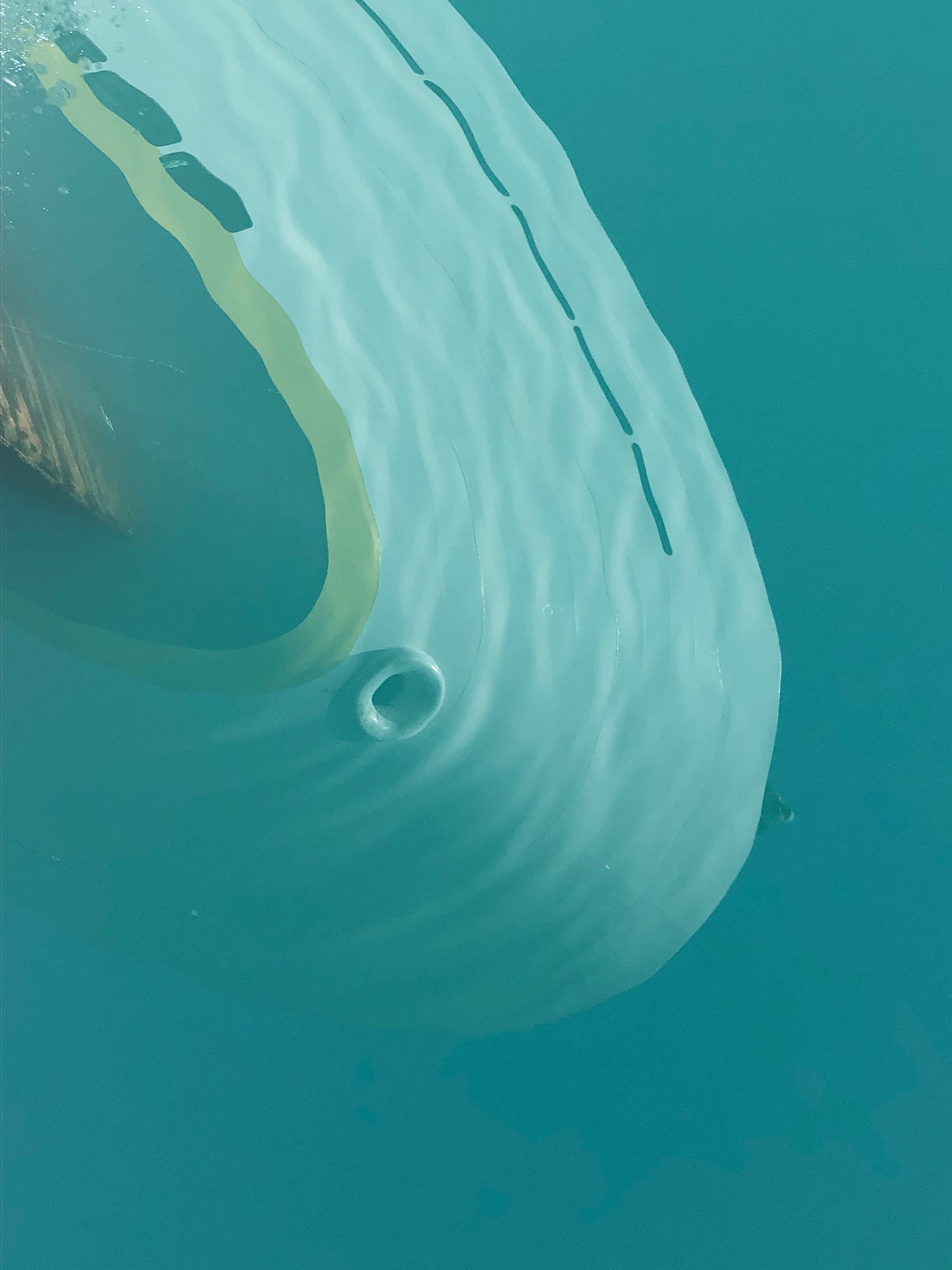
National Geographic Venture reflections. —Daniel Baldwin, Naturalist
Flatey Island, Iceland
Iceland's Wild WestCoast to East Greenland, July 4, 2022
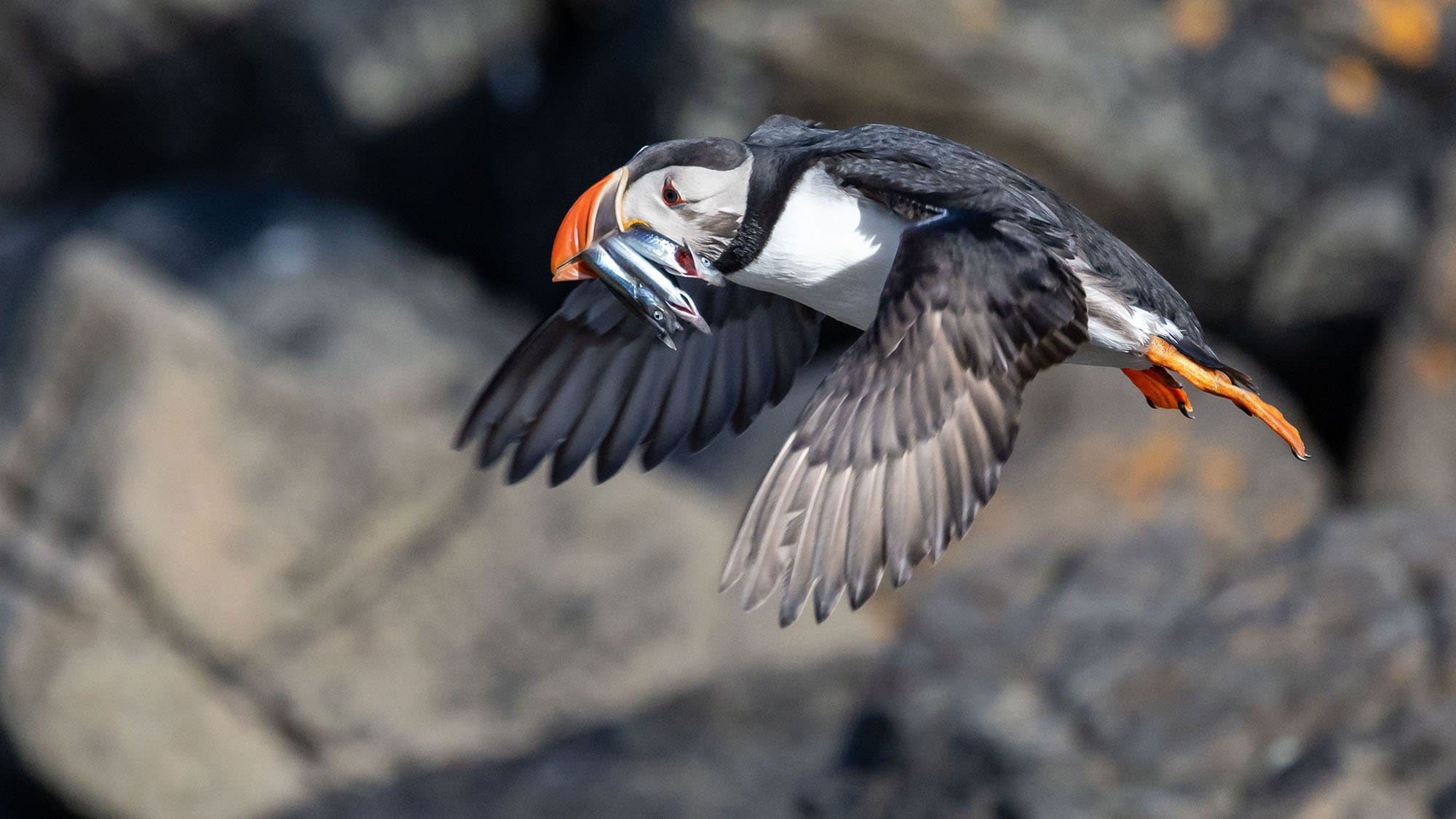
Atlantic puffin near Flatey Island. —Sue Forbes, Naturalist/Certified Photo Instructor
At Sea, Approaching Greenland
Iceland's Wild WestCoast to East Greenland, July 5, 2022
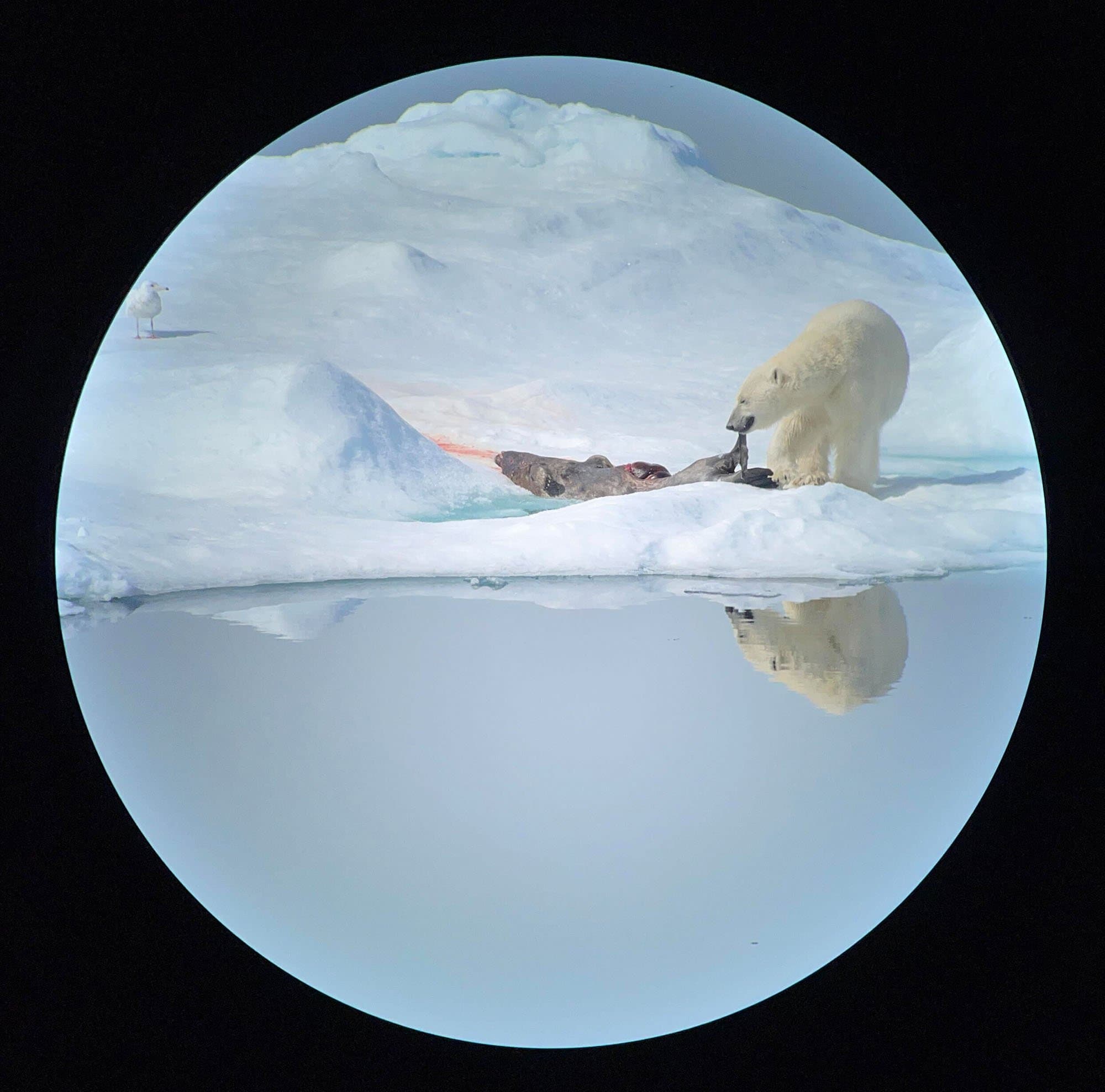
Digiscoping polar bear with iPhone and Swarovski telescope. The highlight of the day was the true meat in the sandwich — a wonderfully prolonged sighting of our first polar bear. For nearly an hour and a half, we watched her behaviour as she ate snow, chased away scavenging gulls, flopped down to rest, drank water from a meltwater pool, and dragged a seal she had freshly killed from one ice floe to another. —Mark Brazil, Naturalist
Related Articles
